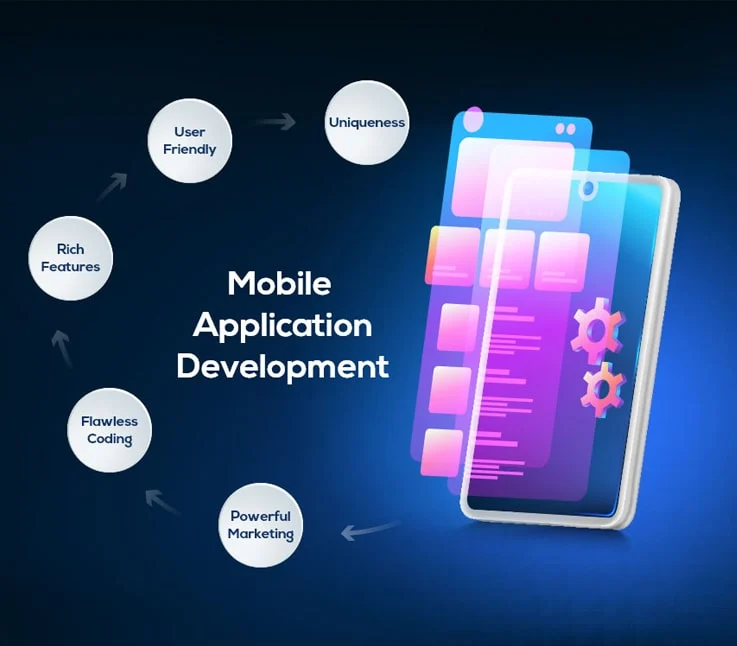App Development
App Development
App development involves the creation of software applications for mobile devices, typically tailored to run on specific operating systems like iOS or Android.
Importance:
Mobile apps have become integral to modern life, offering users a wide range of functionalities, from communication and entertainment to productivity and business solutions.
Key Components of App Development:
a. Front-End Development: This involves designing the user interface (UI) and user experience (UX) of the app. Front-end developers work on creating an intuitive and visually appealing interface for users.
b. Back-End Development: Back-end developers focus on the server-side of the app, managing databases, user authentication, and ensuring the smooth functioning of the app’s logic.
c. Mobile App Platforms: Apps are developed for specific platforms, such as iOS (using Swift or Objective-C) and Android (using Java or Kotlin). Cross-platform frameworks like React Native or Flutter enable developers to build apps for multiple platforms with a single codebase.

Application Programming Interface (API): APIs enable communication between different software applications. In app development, APIs allow the app to interact with external services or access data from servers.
3. App Development Process:
a. Ideation and Planning: The process begins with brainstorming ideas, defining the app’s purpose, and creating a plan that outlines features, functionalities, and target audience.
b. Design: Designers create wireframes and visual designs, focusing on creating an engaging and user-friendly interface. UX design ensures a positive user experience.
c. Development: Developers write the code for the app based on the design and specifications. This involves both front-end and back-end development.
d. Testing: Quality assurance involves rigorous testing to identify and fix bugs, ensuring the app functions as intended. Testing may include unit testing, integration testing, and user testing.
e. Deployment: The app is released to the public or within a specific user group. Deployment involves making the app available for download through app stores or distribution channels.
f. Maintenance and Updates: Regular updates and maintenance are crucial to address issues, introduce new features, and ensure compatibility with the latest devices and operating system versions.
4. Types of Apps:
a. Native Apps: Built specifically for a single platform (iOS or Android), native apps offer optimized performance and access to platform-specific features.
b. Web Apps: Web apps run in a web browser and are accessed through the internet. They provide cross-platform compatibility but may have limited access to device features.
c. Hybrid Apps: Combining elements of both native and web apps, hybrid apps use a single codebase for multiple platforms. They are built using technologies like React Native or Xamarin.
5. Emerging Trends in App Development:
a. 5G Technology: The advent of 5G technology enhances app performance, enabling faster download speeds and improved connectivity.
b. Artificial Intelligence (AI) and Machine Learning (ML): Integration of AI and ML technologies enhances app capabilities, providing personalized experiences and intelligent functionalities.
c. Internet of Things (IoT) Integration: Apps are increasingly connecting with IoT devices, allowing users to control and monitor smart devices through mobile applications.
d. Augmented Reality (AR) and Virtual Reality (VR): AR and VR technologies are transforming gaming, education, and other industries, creating new possibilities for immersive app experiences.
